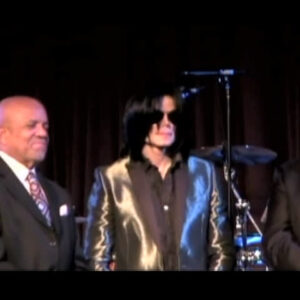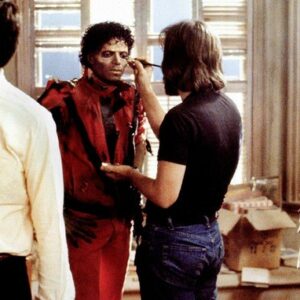Tina Turner’s influence on the music industry is unparalleled. Her powerhouse vocals, magnetic stage presence, and relentless spirit have left an indelible mark on the world of music. But beyond the iconic hits and electrifying performances, Turner played a pivotal role in the rise of music videos in the 1980s, shaping the visual medium in ways that would inspire generations of artists. Her ability to translate music into a visual experience added a new dimension to her artistry, establishing her as not only a queen of rock and roll but also a pioneer of music video storytelling.
The Rise of Tina Turner: A Force Beyond Music
Born Anna Mae Bullock in 1939, Tina Turner’s rise to stardom was anything but conventional. After enduring a tumultuous relationship with her musical partner and husband, Ike Turner, she broke free in the late 1970s and rebuilt her career on her own terms. In 1984, with the release of her album Private Dancer, Tina achieved global superstardom. Her ability to reinvent herself, both musically and visually, was a testament to her creative genius.
Turner’s voice—raw, passionate, and unmistakably powerful—was only one part of her legend. What made her stand out was the total package: a captivating blend of voice, style, and stagecraft that transcended music. As a performer, Turner commanded attention, and in the era when music videos became an essential part of marketing and artistry, she harnessed the power of this visual medium to expand her influence.
The 1980s: The Emergence of Music Videos as a Powerhouse Medium
The 1980s were a transformative time for the music industry. With the launch of MTV in 1981, music videos rapidly became a crucial marketing tool for artists. No longer was success based solely on radio play or album sales—an artist’s visual identity became as important as their sound. Music videos allowed artists to express their creativity in new ways, blending performance with storytelling, fashion, and imagery. For female artists, especially, this was a time to redefine how they were seen and heard.
Turner was no stranger to performance; her live shows were legendary. However, music videos offered her a new canvas—one where she could blend her fierce on-stage persona with carefully crafted visuals that enhanced the narrative of her songs. The music video era was a golden opportunity for Turner, who embraced the medium with enthusiasm, collaborating with top directors and producers to create some of the most iconic videos of the decade.
Tina Turner’s Iconic Music Videos: “What’s Love Got to Do with It” and “Private Dancer”
One of the defining moments of Turner’s career was the release of “What’s Love Got to Do with It” in 1984. The song became her first number-one hit on the Billboard Hot 100 and remains one of her signature tracks. However, it was the music video that cemented Turner’s return to the forefront of the music industry. Directed by Mark Robinson, the video features Turner walking through the streets of New York, exuding a confident, self-assured attitude that would become her trademark. The simplicity of the video—focusing on Turner’s charisma rather than flashy effects—highlighted her strength as a performer and allowed her to connect with viewers on a personal level. The video became a classic example of how music videos could be used to enhance a song’s emotional depth through minimalism.
Following the success of “What’s Love Got to Do with It,” Turner released the music video for “Private Dancer,” a haunting, introspective song about a woman trapped in a life of performing for others. The video, directed by Brian Grant, takes the viewer into the mind of the titular dancer, with Turner performing in an empty, dimly-lit room, dressed in glamorous attire that contrasts with the somber tone of the song. The video is a masterclass in visual storytelling, using symbolism and mood to reflect the song’s themes of isolation and desire for freedom. With “Private Dancer,” Turner proved that music videos could be more than just performance pieces—they could be art forms in their own right.
Artistic Vision: Tina Turner’s Creative Collaboration in Music Videos
Behind every successful music video is a team of creatives working to bring the artist’s vision to life. Turner understood the power of collaboration and worked closely with directors, cinematographers, and stylists to ensure her music videos not only reflected her personality but also told a story. She was not just a passive figure in these productions; Turner was actively involved in shaping the visual narrative of her videos.
For example, in the video for “We Don’t Need Another Hero” from the Mad Max Beyond Thunderdome soundtrack, Turner collaborated with director George Miller, who also helmed the film. The video is a visual spectacle, blending Turner’s performance with scenes from the post-apocalyptic movie. Turner, dressed in her character’s elaborate costume, embodies a powerful, resilient figure—a reflection of her own journey. Her ability to merge her music with the visual aesthetics of the film elevated the song and the video, making it a cultural touchstone of the 1980s.
Similarly, in the video for “Better Be Good to Me,” Turner worked with director Brian Grant to create a high-energy, black-and-white performance piece that mirrored the song’s intensity. The video, with its sharp cuts and dynamic camera work, showcases Turner at her most fierce and unapologetic, cementing her reputation as a force to be reckoned with in both music and visual media.
Tina Turner’s Influence on Future Generations of Artists
Turner’s music videos set a standard for visual storytelling and performance that would influence countless artists in the decades to follow. Her ability to blend emotion, narrative, and style in her videos made her a blueprint for future musicians looking to make a mark in the music video industry. Female artists, in particular, found inspiration in Turner’s work, as she broke boundaries of what it meant to be a woman in the music industry.
Artists like Beyoncé, Rihanna, and Lady Gaga have all cited Turner as a major influence on their careers. Beyoncé, who famously paid tribute to Turner at the 2005 Kennedy Center Honors and again at the 2008 Grammy Awards, has often spoken about how Turner’s performances and music videos shaped her own approach to artistry. Beyoncé’s meticulous attention to detail in her visual albums can be traced back to Turner’s influence, as both women understand the power of combining music with stunning visuals to create a lasting impact.
Moreover, Turner’s work helped pave the way for a new generation of artists to use music videos as a platform for social and political commentary. In her videos, Turner often tackled themes of empowerment, independence, and resilience—messages that resonated with audiences then and continue to inspire today. Artists like Kendrick Lamar and Janelle Monáe have carried this legacy forward, using their music videos to explore complex issues and challenge societal norms, much like Turner did in her time.
The Legacy of Tina Turner in the Music Industry
Tina Turner’s contributions to the music industry go far beyond her chart-topping hits. She was a trailblazer in the world of music videos, using the medium to expand the boundaries of what was possible in music and visual art. Her videos were not just promotional tools—they were extensions of her songs, providing new layers of meaning and connection for her audience.
Turner’s influence on the music video industry can still be felt today. In an era where music videos are often seen as secondary to streaming numbers and social media presence, Turner’s work serves as a reminder of the power of visual storytelling. Her videos were a celebration of individuality, strength, and artistic vision, and they continue to inspire artists to push the envelope in their own work.
As we look back on Turner’s legacy, it’s clear that her impact on the music industry was profound. She was not just a singer or performer—she was a visionary who understood the importance of image and storytelling in music. Her music videos remain iconic, not just for their groundbreaking visuals but for the way they encapsulate her spirit: bold, unapologetic, and fiercely independent.
Tina Turner’s legacy will continue to influence the music industry for generations to come, as future artists look to her as a source of inspiration for how to blend music with visual art. Her work in the 1980s set the stage for the modern music video, and her influence can still be seen in the way artists today use visuals to complement their music. In a world where image and sound are inseparable, Tina Turner stands as one of the true pioneers, forever changing the way we experience music.





